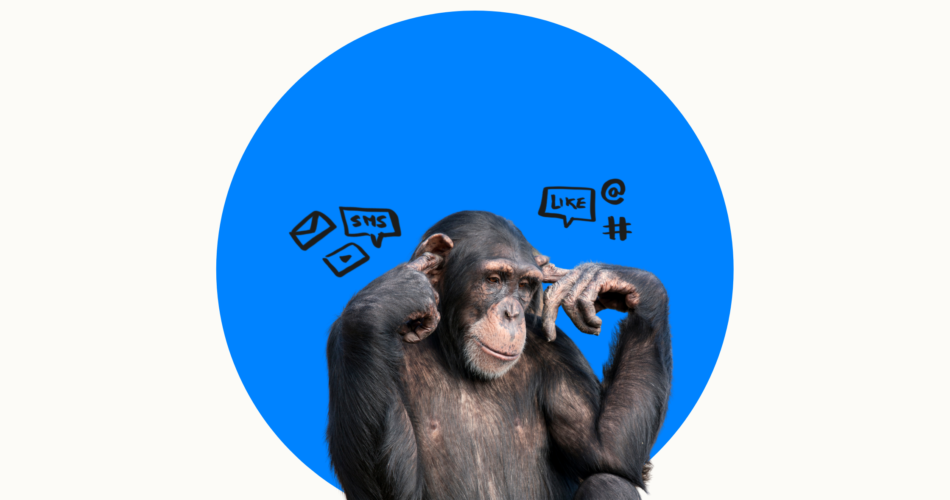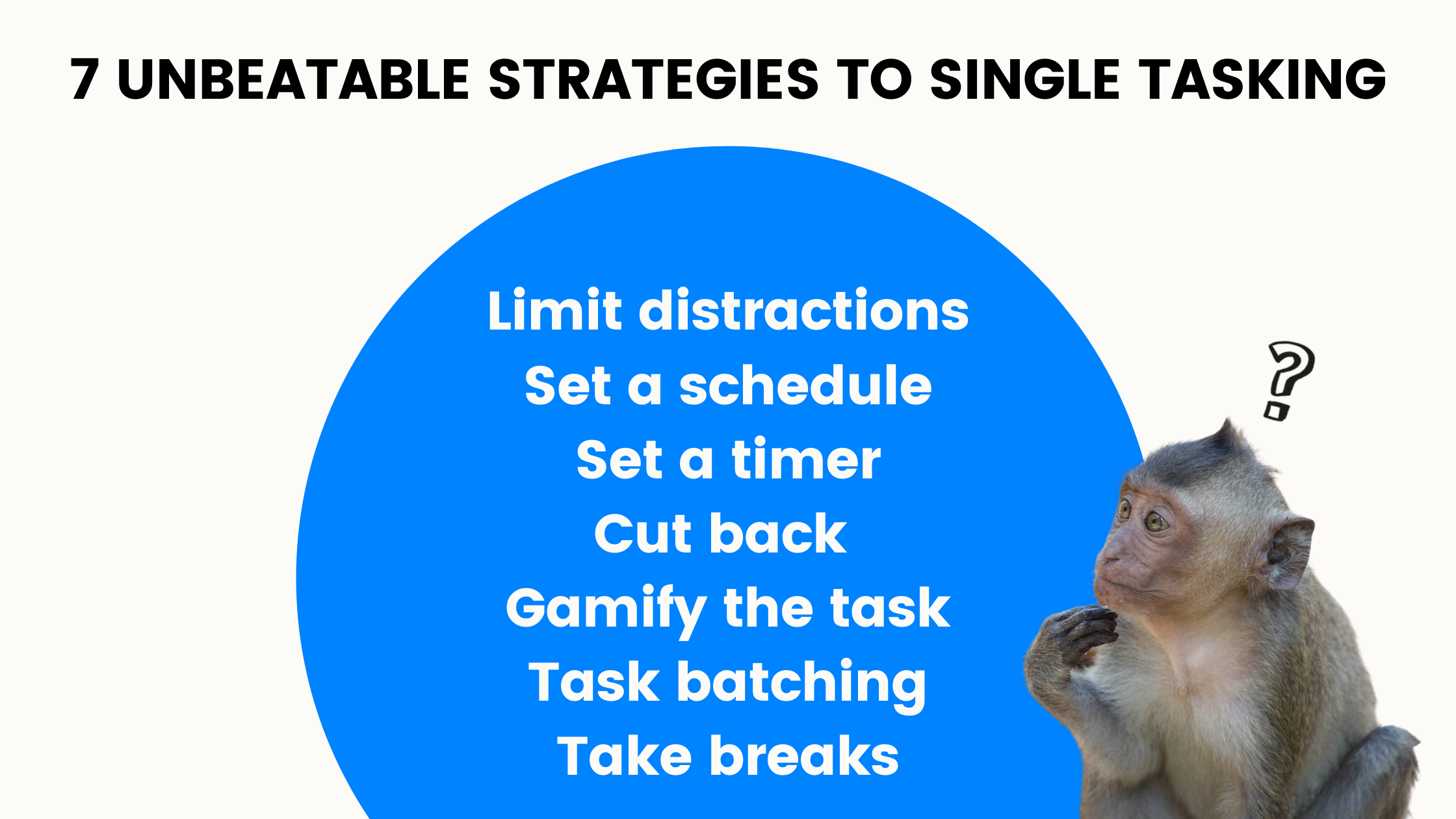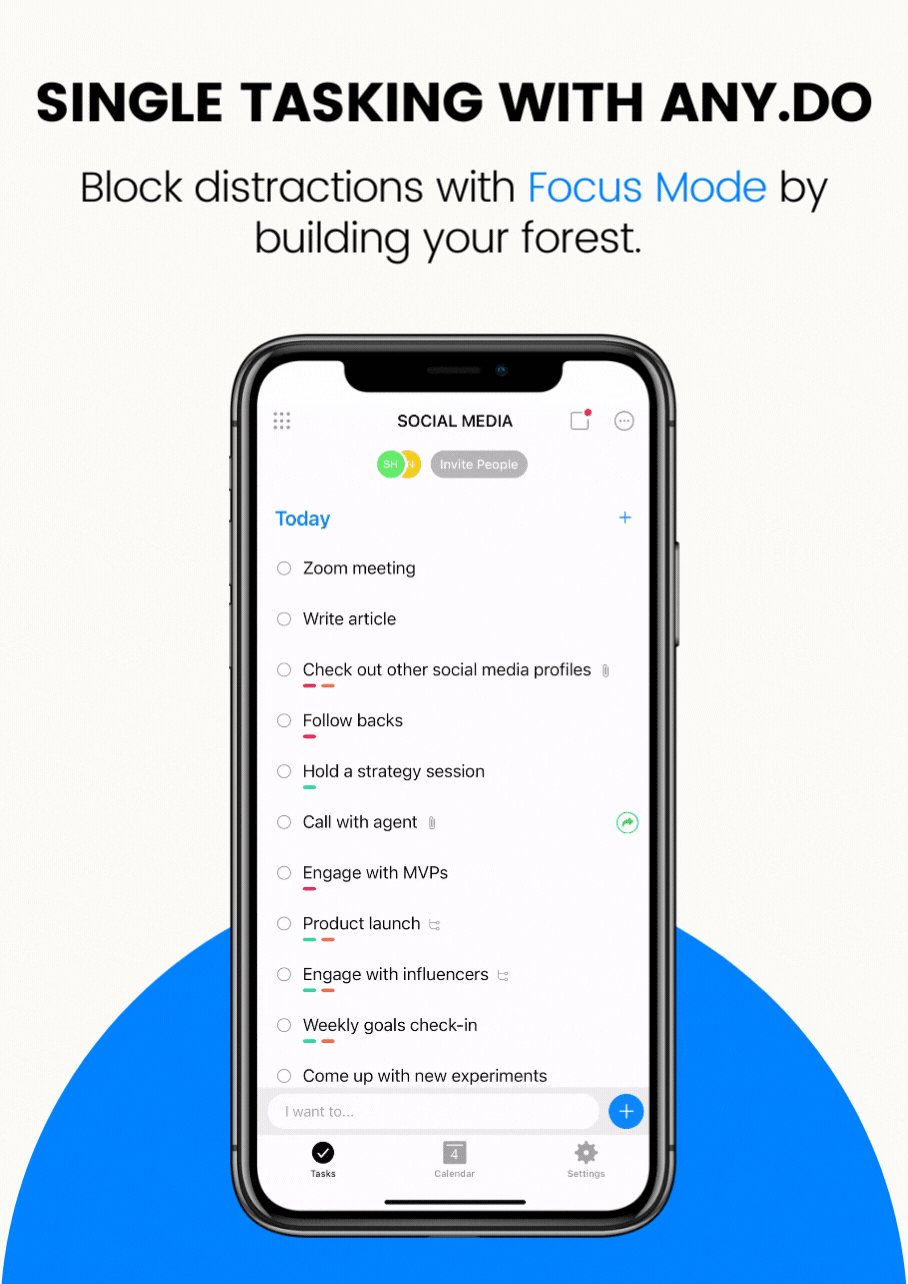When was the last time you’ve given 100% of your attention to anything?
While many of us tend to think that the more you get done during a short period of time, the more productive you are, in most cases, the result is quite the opposite. In fact, a whopping 98% of people cannot multitask effectively, having their productivity reduced by 40%.
So why are we so hell-bent on spreading our attention so thin? Well, it might be due to our ever-growing workload, a sense of urgency, fast-approaching deadlines, or even a routine we’ve simply got accustomed to. Whatever it is, it’s time we ask ourselves – isn’t it time to try something new?
On the other end of this productivity spectrum, you’ll find Single Tasking. Though the human brain struggles to focus on many subjects at once, it actually excels at focusing on a single topic at a time – committing to fully completing it as quickly as possible.
Despite being fairly simple, single-tasking can be a far superior way to complete your work in a fast and efficient way. In the office or at home, single-tasking means you’re less susceptible to distraction, you’re more energy-efficient, and you’re more productive.
Keeping your attention on one task for an extended period of time can be difficult, especially with technology so readily available through various devices. But practicing single-tasking can help you focus and rebuild your attention span in ways you’ve never thought possible.
In celebration of Single Tasking Day (February 22nd), we’re covering the basics of this method and the impact it can make on your life when done correctly. Keep reading to learn how.
The cost of multitasking
A 2010 study by Harvard psychologists reported that people spend nearly 50% of their waking hours thinking about something other than what they are doing. By dealing with multiple tasks at once, we believe we are incrementally making progress across the board, ultimately allowing us to accomplish more. The problem is that this simply isn’t true.
Multitasking is a myth.
It is not just that multitasking is bad for your productivity, quality, and efficiency – it is scientifically impossible. As we’re busy doing multiple tasks at once, our brain is actually switching back and forth constantly – more commonly known as task switching or context-switching. As a result, tasks will take longer and are more prone to errors.
When Multitasking Fails Us
Multitasking is a serious productivity drain.Multitasking severely reduces productivity. Multitasking doesn’t exist in the brain; any time we think we’re doing something else at the same time, our brain is likely just switching from task to task quickly. Focusing on one thing is more effective for many reasons.
Trying to multitask distracts us
Multitaskers tend to experience more distractions than people who focus on only one task at a time. Considering the habit of multitaskers to constantly refocus on new tasks, it makes sense that they tend to neglect their original project quite quickly. In fact, several studies have found that multitaskers may be more distracted, even when they are not doing multiple tasks simultaneously. This is due to cultivating the very nature of the wandering mind.
Trying to multitask slows us down
The reality is that multitasking makes us work slower and less efficiently. Psychologists refer to these effects as “task switch costs”. Jumping from one thing to another is associated with increased mental load (like a slower pace when switching between tasks).
In addition, changing our focus prevents us from relying on automatic behaviors to execute tasks quickly. Focusing on a single task we have done before allows us to work on “autopilot” and free up our mental resources. This process is bypassed when we switch back and forth, making us work at a slower pace as a result.
Trying to multitask makes us prone to errors
You may be more likely to make mistakes if you are multitasking. Research has shown that students who multitask in class tend to have lower GPAs (and if they continue multitasking at home, they often take longer to finish their homework). Adults may also experience lower performance while multitasking. One study actually found that older adults were likely to make more mistakes while driving if they were multitasking.
Multitasking isn’t a habit you’ll want to adopt and indulging in it won’t benefit you or your surroundings in any type of way. Although it’s hard to let go of the illusion of productivity, by focusing on a single cognitive task rather than juggling several tasks at once, you –
- Get rid of unnecessary noise
- Can focus on what’s truly important
- Get to accomplish more.
Rather than frantically reacting to real-time alerts and notifications, if you want to do any deep, productive work, where you work intensively on one vision for a long period – you must first master single-tasking.
What is Single Tasking?
As the name implies, Single Tasking (on mono-tasking) means doing one thing at a time with the least amount of interruptions and distractions as possible. It rose to popularity following the research and theories that showed the detrimental effects of multitasking on not only productivity but also your mental health.
The method is so popular now that it even has a day dedicated to it – February 22nd, known as single-tasking day. This day recognizes the benefits of single-tasking and the difference that it makes in people’s productivity.
How single tasking can change your life
Several studies suggest single-tasking is more fulfilling and productive, and less stressful. However, if you usually work with ten or more open tabs, you might need a bit more encouragement to close them all. So, how can single-tasking change your life and outlook on productivity?
Seeing things through
Multitasking is misleading in many ways. While it appears promising, in reality multitasking frequently stifles productivity by serving as a convenient way to put a challenging task aside and moving on to the next. By switching between tasks when they become too challenging or boring, how many of us fail to see a challenging task through to completion? By defaulting to single-tasking, we are more likely to accomplish pesky tasks before moving on to others. Take on one task at a time and work until you have completed it or completed as much as you can.
Experiencing the moment
With so many distractions around us, it’s rare for us to fully concentrate on one task at hand. Today’s technology-driven society makes it hard for us to do so. In the world we live in, we are always in reach and we are expected to be available to others, whether colleagues or friends. We are bound to accomplish more when we switch off from distractions and give single tasking our full attention from start to finish.
Prioritizing rest and replenishment
Whenever we have a lot of energy and everything is going well, we multi-task without even realizing it. As illness strikes or when our energy levels are low, we must change our default setting and consciously let ourselves do only one thing at a time and sometimes even nothing at all. Learn the value of slowing down. Be kind to yourself by doing one thing at a time (or nothing at all). Give yourself time and space to rest and replenish.
Organizing and prioritizing with ease
We are hard-wired to believe that the more we accomplish each day determines if that day is good or bad. Questioning this leads us to realise how false this way of thinking is. There are very few tasks that require immediate attention, and our happiness and emotional health are more important than the completion of multiple yet possibly insignificant items. Let yourself have time and space to finish the most important task instead of rushing through many small unimportant ones. The rest can wait.
Stop seeking validation
The basic need of pleasing others often drives us to rush to complete multiple tasks in short periods of time. Whenever we set priorities, we don’t want to disappoint the people we care about. In reality though, most people don’t pay as much attention to the things we hold ourselves accountable to. You’d be surprised how many people actually prefer you take care of yourself rather than stress yourself out. By focusing on only one task, we can determine what is most important and what can wait. The people around you will be happier knowing you are healthy and capable of seeing things through, rather than rushing through meaningless items.
There’s no question that single tasking can be effective when done correctly. By adopting a few simple work guidelines, you too can enjoy the various benefits this method has to offer.
How to Single Task?
Single-tasking does not require any extra resources to be executed effectively. The technique isn’t even something new or revolutionary. It is based on a simple premise – do whatever you are doing with full attention in order to execute it effectively. It’s about entering the ‘state of flow’.
Flow is a psychological concept named by the psychologist Mihaly Csikszentmihalyi. According to him, when a person enters the ‘state of flow’ they are completely immersed in the task they are doing to the point that everything arounds you becomes a blur.
While it might sound simple in theory, for many it’s easier said than done. If you’re one of those who are finding it hard to detach from the mindset of multitasking, try out the following steps to regain your focus:
Limit Distractions
Distractions might be the single most prominent factor of multitasking. If your attention is diverted to see a notification pop up, your focus is broken. Next thing you know, 45 minutes have passed and you are behind your schedule.
The first and most essential element of single-tasking is to free yourself from any distractions that could potentially impact your performance. This includes having a proper workspace where external distractions are limited as well as putting away your cell phone or social media.
Gamify the task
If you have trouble avoiding the temptation of distractions then you can try this technique called gamification. Gamification is to turn any task, chore, or goal into a game. This is a great way to make yourself focus on any task.
To gamify a task, simply turn it into a challenge for which you will reward yourself afterwards. For example, on a day when I don’t feel like working on a task I find boring, I challenge myself to work uninterrupted for 20 minutes. The reward? Making progress on a task you’ve found boring and stressful.
Set a Timer
To motivate yourself to work on a task uninterrupted, put on a timer that will help you frame your work and your rest time. Focusing all your attention span on a single topic might not be easy at first, so knowing you only have a limited amount of time to get a task done is extremely beneficial. Knowing what time frame you’re dealing with, makes it easier to take action and stay focused.
Find your ideal schedule
The next thing you can do to limit multitasking and promote single-tasking is to find your ideal schedule. This means working during the time when you are naturally high energy and motivated to work. Some people work best in the morning, while others feel they do their best work during the night. Once you find a schedule that works for you, either by trial and error or by scheduling tasks during a high-energy time of day, single-tasking becomes a breeze.
Cut back on your commitments
If you find it difficult to single-task, take a look at your list of commitments and ask yourself if there might be too much on your plate. When you have a lot on your plate you’ll be forced to multitask in an attempt to fulfill your commitments. The solution? Cutting back and trimming your to-do list to allow yourself time and energy to accomplish what’s most important.
Chunking and Task batching
This technique is for those who cannot reduce the number of commitments per day. Task batching allows you to batch similar tasks together to avoid juggling between tasks at random. The idea is to group similar tasks together to avoid shifting focus. For instance, batching together new ideas for content along with researching for an article you’re working on brings upon a similar thread – researching.
This eliminates the extra time it takes to shift focus and attention from one activity to another and give due attention to each task.
Take breaks when needed
Nobody can work nonstop without a fulfilling break. Doing so can result in burnout, leading to decreased productivity. Taking a break in between focused sessions is crucial to ensuring that your motivation remains high.
For example, if you’re using a timer, make sure to add extra time for a quick break in between sessions. If you’re gamifying a task, make the reward a satisfying break time outside the office or a quick walk to get lunch.
Whatever methods you choose to incorporate into your daily routine to successfully execute Single Tasking, don’t be afraid to play it by ear as needed. Focus doesn’t always come easy, so whatever you do, be kind to yourself and make sure you have enough of a break in between tasks to unwind and reboot your brain.
Single Tasking with Any.do
In terms of productivity, there’s no one-size-fits-all solution. However, certain techniques accompanied by specific tools can help you ease the transition from multi-tasking to mono-tasking. Here are 3 ways how Any.do can help out:
Focus mode is a task-based timer that helps you fight mobile distractions. One of the fastest ways to lose focus these days is by scrolling through your social media accounts. The moment you reach out to your phone, it’s likely that your attention was already diverted from the task at hand.
The way Any.do helps you fight this phenomenon is by blocking your screen for whatever time frame you define, growing a tree for the duration of that time. If you choose to open another app, your tree will die. The more you accomplish, the more your forest grows, motivating you to keep pushing forward.
Filters and tags are the perfect way to task-batch. Whatever tasks you have pending, make sure to mark them with different colors that will make it easy for you to work in clusters instead of losing time while separately processing several tasks of the same nature. When you’re ready to get to work, simply use Any.do’s filters to see only the tasks that have to do with the single topic you’re dealing with.
Any. do’s Calendar Integration will allow you to view your events and tasks under one single display. This will reveal your responsibilities side by side, helping you to check up on your commitments. Having a clear visual of your day will help you decide if certain tasks need to be pushed to a later date to ease your workload, or see if you have any spare time to squeeze in more tasks.
A clear overview of your agenda will also help determine your ideal schedule, as you’ll be able to notice certain patterns that form throughout the week. Once you better understand your own time constraints, you will have the opportunity to switch things around your schedule for quality deep-work.
Conclusion
Multitask is almost unavoidable these days. It is encouraged by employers and forced by certain life circumstances. While you might not be able to shake this habit entirely, it is definitely something that you should try to avoid whenever possible, due to the varying negative aspects of this practice.
If your goal is to work productively, make the effort to commit to single-tasking. Sure, there would be days when you’d have to juggle between tasks and commitments, but on days when you are committed to working efficiently, single tasking is your way to success.
By training your brain to stay focused on a single item for a long period of time, you will improve mental capacity, reach better and faster results and get a much better sense of accomplishment.
Have you ever tried single tasking? Tell us what your experience has been like in the comments!









